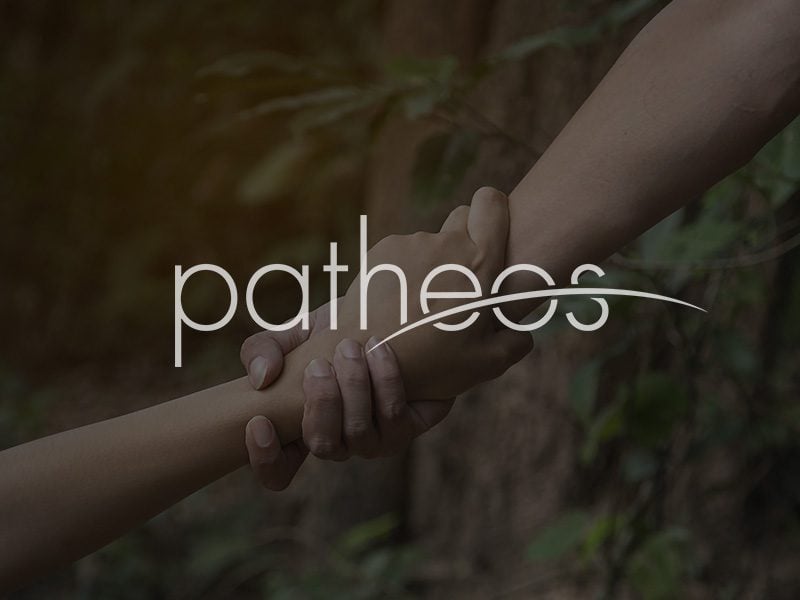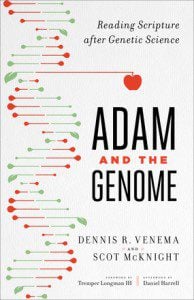The Rev. Martin Luther King Jr. famously said that Sunday at 11 a.m. was the most segregated hour in
America. Today, pastors like Mr. Beard are working to change that, with some success. The proportion of churches in the U.S. with mixed-race congregations—where no single group tops 80%— has grown from 7% in 1998 to 13% in 2012, according to an analysis of the National Congregations Study, a survey run by Duke University. “I just began to wonder about our being so mono-ethnic in a multiethnic city,” said Mr. Beard, the senior pastor of what is now called Peoples Church in Cincinnati. “If the church is segregated, no wonder the city is segregated.”Pastors who seek more diverse congregations—whether motivated by theology or changing neighborhoods—quickly discover that such diversity is easy to conceive but hard to execute. They report clashes over politics, musical tastes, whether children should be shushed during services, how best to talk about race and even how to address pastors. In Cincinnati, one man said when Mr. Beard began work, “We were all under the same roof, but we weren’t mixing.” One Sunday, the pastor asked people to sit with someone they didn’t know, preferably of a different race. With that, a white member said she met a black woman who became one of her closest friends. (HT: LC)
What children around the world eat for breakfast:
Breakfast for a child in Burkina Faso, for example, might well include millet-seed porridge; in Japan, rice and a putrid soybean goop known as natto; in Jamaica, a mush of plantains or peanuts or cornmeal; in New Zealand, toast covered with Vegemite, a salty paste made of brewer’s yeast; and in China, jook, a rice gruel topped with pickled tofu, strings of dried meat or egg. In Cuba, Brazil and elsewhere in Latin America, it is not uncommon to find very young children sipping coffee with milk in the mornings. In Pakistan, kids often take their milk with Rooh Afza, a bright red syrup made from fruits, flowers and herbs. Swedish filmjolk is one of dozens of iterations of soured milk found on breakfast tables across Europe, Asia, the Middle East and Africa. For a child in southern India, the day might start with a steamed cake made from fermented lentils and rice called idli. “The idea that children should have bland, sweet food is a very industrial presumption,” says Krishnendu Ray, a professor of food studies at New York University who grew up in India. “In many parts of the world, breakfast is tepid, sour, fermented and savory.”
Standing desks for youth in schools.
Good for Elizabeth Holmes:
Elizabeth Holmes left Stanford University at 19 with a plan to start her own company. For money, she cashed out the funds her parents had saved for tuition. Now, she counts billionaire Larry Ellison as an investor and has former secretaries of state on her board.
I think a lot of young people have incredible ideas and incredible insights, but sometimes they wait before they go give their life to something,” she said. “What I did was just to start a little earlier.”
Holmes, through her company Theranos, has taken on the $76 billion laboratory-diagnostic industry as her target. It’s an industry that was just waiting to be disrupted, since blood testing has not changed since the modern clinical lab emerged in the 1960s.
Her idea: No more vials. No more tourniquets. Just a pinprick of blood gathered in a container smaller than a dime. And up to 70 lab tests can be run on one drop of blood in less time than traditional tests.
Good for Boyan Slat:
Boyan Slat is a 20-year-old on a mission – to rid the world’s oceans of floating plastic. He has dedicated his teenage years to finding a way of collecting it. But can the system really work – and is there any point when so much new plastic waste is still flowing into the sea every day?
“I don’t understand why ‘obsessive’ has a negative connotation, I’m an obsessive and I like it,” says Boyan Slat. “I get an idea and I stick to it.”
This idea came to him at the age of 16, in the summer of 2011, when diving in Greece. “I saw more plastic bags than fish,” says Slat. He was shocked, and even more shocked that there was no apparent solution. “Everyone said to me: ‘Oh there’s nothing you can do about plastic once it gets into the oceans,’ and I wondered whether that was true.”
Over the last 30 to 40 years, millions of tonnes of plastic have entered the oceans. Global production of plastic now stands at 288 million tonnes per year, of which 10% ends up in the ocean in time. Most of that – 80% – comes from land-based sources. Litter gets swept into drains, and ends up in rivers – so that plastic straw or cup lid you dropped, the cigarette butt you threw on the road… they could all end up in the sea.
The plastic is carried by currents and congregates in five revolving water systems, called gyres, in the major oceans, the most infamous being the huge Pacific Garbage Patch, half way between Hawaii and California.
Speaking of schools, read this one by Jessica Lahey:
The teacher-student relationship impacts every aspect of the educational experience. When students don’t feel safe, respected, or truly known by their teacher, they are less likely to invest and engage in their education. Conversely, when teachers feel distanced from or distrusted by their students, it’s nearly impossible to muster the enthusiasm to walk into the classroom each day, let alone instill motivation or investment in our students.
During my own teaching career I’ve been fortunate enough to have the time and opportunity to get to know my students and their educational needs well. I taught English, Latin, and writing in middle school over three successive years, and given this much time, I was able to get to know my students well and respond to their particular emotional and educational needs.
However, I recently began teaching high school writing in an inpatient drug and alcohol rehabilitation center, where students come and go as insurance and treatment dictates, and due to the strict confidentiality guidelines, I am not allowed to share any personal information with them. I can’t ask about their lives, and they are not allowed to know anything about mine. I sensed when I signed the confidentiality agreement that this restriction would affect my teaching, but I had no idea just how much. I have struggled to find ways to connect with my students within the rules, but I still feel as if I am teaching in a hermetically sealed bubble. For the first time in my life, my teaching just isn’t connecting with my students.
Nicholas Kristoff and Cheryl WuDunn’s newest book:
In a recent article in the Guardian, Julia Gillard [the former prime minister of Australia] and actress Cate Blanchett talked about the importance of educating women. Your research in philanthropy shows the same. Why are women so important to improving communities and the world?
WuDunn: If you educate a woman and bring her into the formal labor force, they become a practical approach to changing the world around them. There’s a saying that development experts like to use: If you educate a boy, he does very well, but if you educate a girl, you educate an entire village.
Because of the role she plays in the household, she raises boys and girls in a more enlightened way. Evidence shows how critical a role women can play in society. If they’re marginalized, there’s also evidence that when you have just mainly young men in the mainstream, the culture takes on certain characteristics of a men’s locker room. That means, for instance, that it can be more violent. So it really is important to bring women into the mainstream of society. But they can only be productive if they are educated.
Another very practical implication if you educate a woman is that she tends to have fewer kids. That’s very important because population growth has a lot of implications for a country but also for a household. It’s harder to manage more kids if you’re poor and pay for food and health care and education.
Quite the report about Nigerian mega-mega-mega-churches.
Some, like one or two of my colleagues, work best with distractions! By Rachel Feltman:
Not everyone is actually distracted by the “distractions” provided by electronics and social media. In fact, some individuals may get more done when their work atmosphere is full of beeps and buzzes.
Headphones in, Twitter open, cellphones at the ready — that’s how many people, especially teens and young adults, get their work done these days. But while this so-called multitasking may strike many as procrastination in disguise, research by a pair of high school seniors in Oregon says that’s not always the case….
In their study, 400 adolescents were tasked with completing basic tests in one of two rooms. The first was free of distractions, but in the second participants were required to listen to music. They were also told they could do anything they wanted on their phones and computers, and that they should expect an e-mail and quickly answer it.
Unsurprisingly, most people did better in the room where they were allowed to focus on just the testing. But about 15 percent of those tested — those who classified themselves as frequent multitaskers — actually did better when they had e-mail and music to focus on as well.
ORANGEVILLE, Ill. (AP) – A 6-foot-4-inch cow owned by an Illinois woman was recently dubbed the world’s tallest.
Patty Hanson and Blosom the cow smiled for their official Guinness World Records photo shoot Monday.
Hanson received an email in mid-August saying Blosom had been named the world’s tallest cow. She sought the record after veterinarians and the cow’s foot trimmer constantly noted the 2,000-pound animal’s large size, Hanson said. At the end of May, family and friends began documenting Blosom’s mass through photos and videos. Her official measurements were taken by a vet from Orangeville Animal Health Service.
“When I put Blosom’s halter on, she knows it’s time to go to work greeting people, and one of the best things I love about this big cow is she makes people smile. But now when I get to tell them they are looking at the world’s tallest cow, I can’t wait to see their reaction,” Hanson said.
Hanson got Blosom when she was a calf and eventually decided to keep her as a pet. She turned 13 in July.
The sad but true story of Ken Caminiti:
What you cannot see in the collection of game tapes and memories is their son’s unwavering generosity, unquenchable appetites and, tragically, his addictive personality. Alcohol, painkillers, narcotics…eventually, each got its grip on him. And, of course, steroids. He was the first player to go public with his use, to Sports Illustrated in 2002.
“He was the first one to come out and admit it,” says Trevor Hoffman, the Padres’ legendary closer and a friend and teammate of Caminiti’s in San Diego from 1995-98. “I think that took a lot of nuts on his end to say, ‘yeah, this is what I did.’ Maybe at the time he was hoping to cleanse himself, to get rid of other demons.”
“There were just real warm moments that he provided with great generosity with his money, time and heart,” says Dr. Charles Steinberg, an executive vice president with the Boston Red Sox who ran the Padres marketing department during Caminiti’s time in San Diego. “I do think about him now, and I miss him now. This should have been someone who was going to be a part of the Padres alumni for years, just as Tony Gwynn should have been a part of the Padres alumni for years.”
Ten years. This is one anniversary you will not find baseball celebrating. But it should not pass unnoticed. Because few players are as beloved a teammate as Caminiti was, and fewer still had the honesty and courage to shine a light on the darkness all those years ago and help baseball come clean.
Marguerite del Giudice introduces us to Angela Duckworth:
PHILADELPHIA—MacArthur Foundation “genius” award winner and research psychologist Angela Lee Duckworthis a reluctant star. Her pioneering studies at the University of Pennsylvania into how character relates to achievement have been going on for 12 laborious years now, and she expects to die doing them, but you can spare her the fanfare. When the moderator of a recent live video presentation introduced her by saying, “I tried to find something on her, but she appears to be perfect,” she couldn’t help but ever-so-slightly grimace. There’s no getting around, however, that she’s “a whirlwind of brilliance and energy,” according to one Stanford colleague, and a leading voice in the effort to translate into the classroom ideas like hers that self-control and grit, more than talent and IQ, may hold the keys to a better life.
If it’s not unusual for you to burn the midnight oil scouring the Web for the perfect handbag or a cozy pair of boots, new data from Google show you’re far from alone.
In a blog post published Thursday, Google said that one-third of all shopping searches take place between 10 p.m. and 4 a.m.
With the holiday shopping season around the corner, this study shows that retailers are truly fighting a round-the-clock battle to win your business.
HBO CEO Richard Plepler announced today that the company will launch a “stand-alone, over-the-top HBO service in the United States” in 2015. That means that you will soon be able to add HBO to the list of television you buy without a cable subscription, including Netflix, Hulu Plus, Amazon Prime, and NBA League Pass.
This marks a tantalizing development for millions of households without cable (and who, for whatever reason, weren’t already borrowing HBO Go passwords from friends and family). Does it also mark the beginning of the end of the cable bundle?
There are three ways to gauge the impact of HBO “Go-It-Alone” on the TV industry:
- How many subscribers will dump cable once they can buy HBO alone?
- How many non-subscribers will be encouraged to remain non-subscribers?
- How will the rest of the industry react?
It seems that the audience most likely to pick up an HBO “Go-It-Alone” product today are mostly the young, lower-income Internet-savvy viewers who weren’t cable customers, anyway. That suggests that HBO Go-It-Alone will restrain cable’s growth by preventing new sign-ups, rather than hurt cable by creating more cord-cutters.













